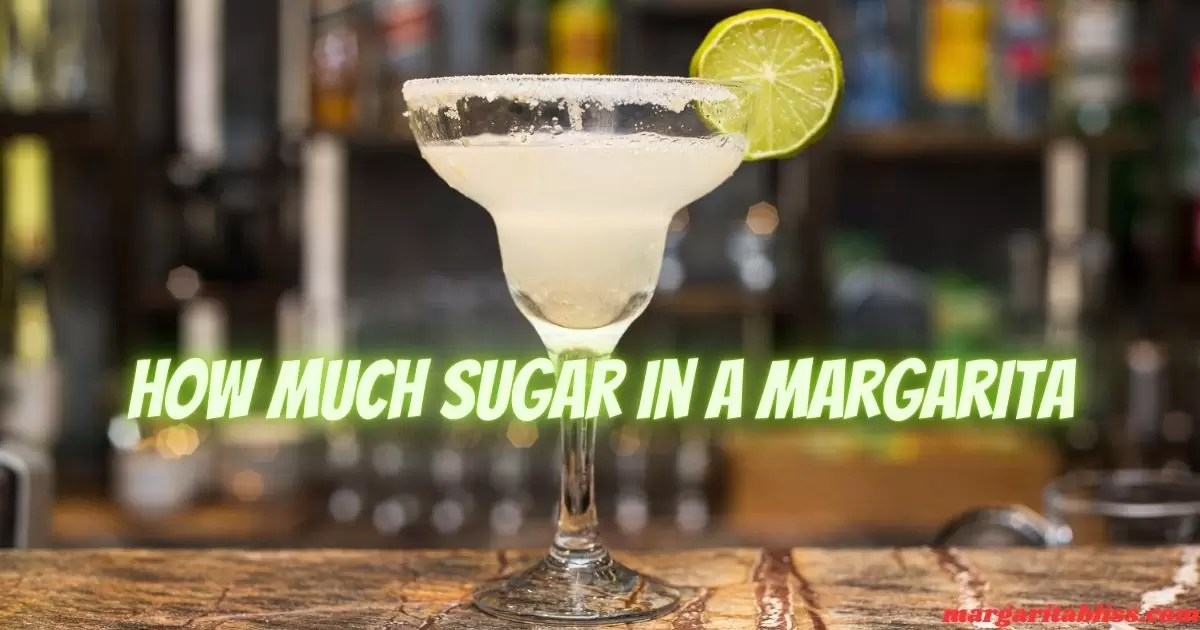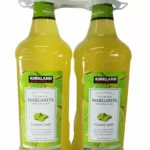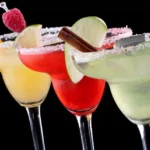Sugar in a Margarita refers to the sweet component added to this popular cocktail. It balances the tartness of the lime juice. Sugar can be added directly or through sweet liqueurs. This sweetness is key to the Margarita’s unique flavor.
When you sip a Margarita, have you ever wondered, How much sugar is in this drink? This question is crucial because the sugar content significantly affects the taste and quality of the Margarita.
The use of sugar in a Margarita has a rich history. Originally, Margaritas were simpler, often just tequila, lime, and salt. Over time, sugar was added to enhance flavor and appeal, reflecting evolving tastes and cocktail trends.
Basic Composition of a Margarita
The Margarita, an iconic cocktail, is traditionally made with three key ingredients: tequila, lime juice, and triple sec, a type of orange-flavored liqueur. This simple yet elegant blend creates a refreshing and vibrant drink, popular in many social settings. The classic Margarita recipe embodies a balance of sweetness, sourness, and the robust flavor of tequila, often served with a salted rim to add a savory contrast.
Role of sugar in balancing flavors
In Margaritas, sugar plays a vital role in balancing the sharp acidity of lime juice and the strong, distinctive taste of tequila. It softens the intensity of the alcohol and complements the citrus notes, creating a harmonious blend of flavors.
The sweetness of sugar or sweet liqueurs counteracts the tartness, making the drink more palatable and enjoyable. The right amount of sugar enhances the overall sensory experience of the Margarita, ensuring each sip is as pleasing as the last. This is particularly crucial when crafting a Sugar Free Margarita recipe, where the absence of sugar requires thoughtful balancing of flavors to maintain its delightful essence.
Papular Margarita Variation
| Margarita Variation | Sugar Content per Serving |
| 1. Classic Lime Margarita | 10-15 grams |
| 2. Strawberry Margarita | 15-20 grams |
| 3. Mango Margarita | 20-25 grams |
| 4. Frozen Margarita | 25-30 grams |
| 5. Cadillac Margarita | 15-20 grams |
| 6. Spicy Jalapeño Margarita | 8-12 grams |
| 7. Skinny Margarita | 5-10 grams |
| 8. Watermelon Margarita | 12-18 grams |
Types of Sugar Used
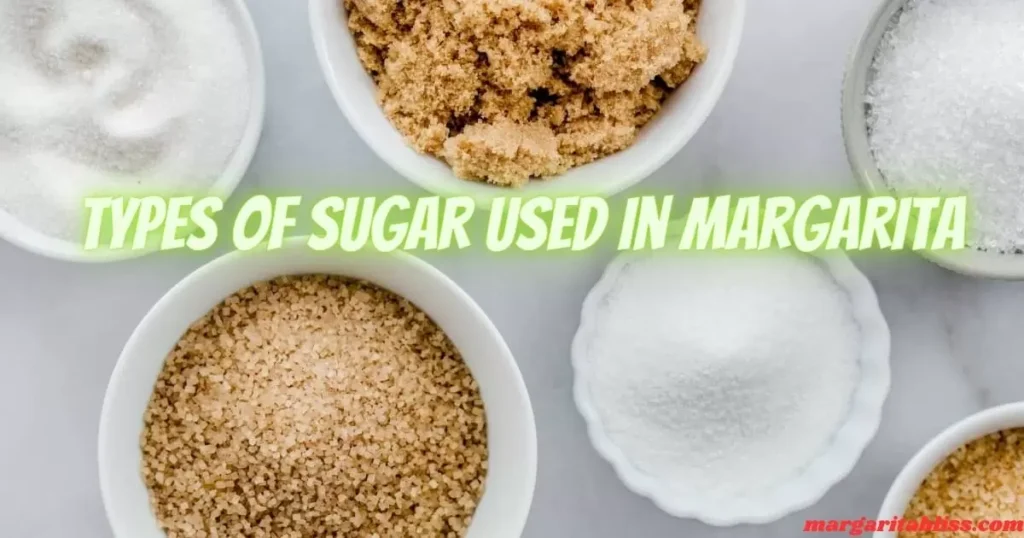
In Margaritas, various types of sugar are used to achieve the desired sweetness. Granulated sugar, often in a simple syrup form, is commonly used for its ability to dissolve easily. Alternatively, agave nectar, a natural sweetener from the agave plant, is popular for a smoother, more nuanced sweetness.
Some recipes call for honey, offering a richer, more distinct flavor profile. The flavored liqueurs like triple sec or Cointreau contribute to the sweetness, each adding their own unique taste to the classic Margarita.
Granulated sugar vs. syrup
Granulated sugar, in its raw form, is often used for its straightforward sweetness and is a staple in many kitchens. Its granules can be slow to dissolve in cold liquids, potentially leading to inconsistency in texture and taste.
Syrup, usually a blend of sugar dissolved in water, offers a smoother integration into drinks. Its liquid form ensures a uniform distribution of sweetness, providing a more consistent flavor and texture in cocktails like Margaritas.
Alternative sweeteners (agave nectar, honey)
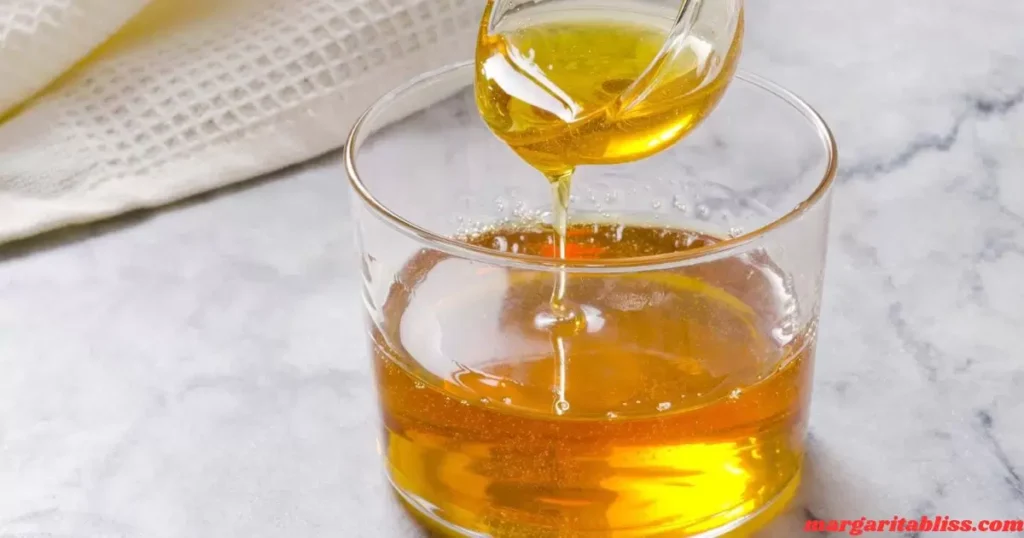
Agave nectar and honey are popular alternative sweeteners in cocktails, offering unique flavors and textures. Agave nectar, derived from the same plant as tequila, complements Margaritas with its mild, naturally sweet profile, enhancing the drink without overpowering it.
Its low glycemic index also makes it a favored choice for health-conscious consumers. Honey, with its rich, distinct flavor, adds depth and a touch of floral sweetness to cocktails. Both are excellent for those seeking natural, flavorful alternatives to traditional sugar or syrup in their Margaritas.
Average Sugar
The average sugar content in a Margarita can vary, but a standard serving typically contains about 1 to 2 teaspoons (4-8 grams) of sugar. This amount can fluctuate depending on the recipe and the types of ingredients used, such as the choice of liqueur or sweetener. Homemade or craft Margaritas have less sugar compared to commercial pre-mixed versions, which often contain higher sugar content to enhance flavor and shelf life.
Amount of sugar in a standard Margarita
A standard Margarita typically contains approximately 10-15 grams of sugar per serving. This amount is influenced by factors such as the type of sweeteners used (like simple syrup or agave nectar), the proportion of triple sec or other liqueurs, and individual preparation methods. It’s important to note that variations in recipes can lead to significant differences in sugar content, with some versions having more or less sugar than the average.
Comparison with other popular cocktails
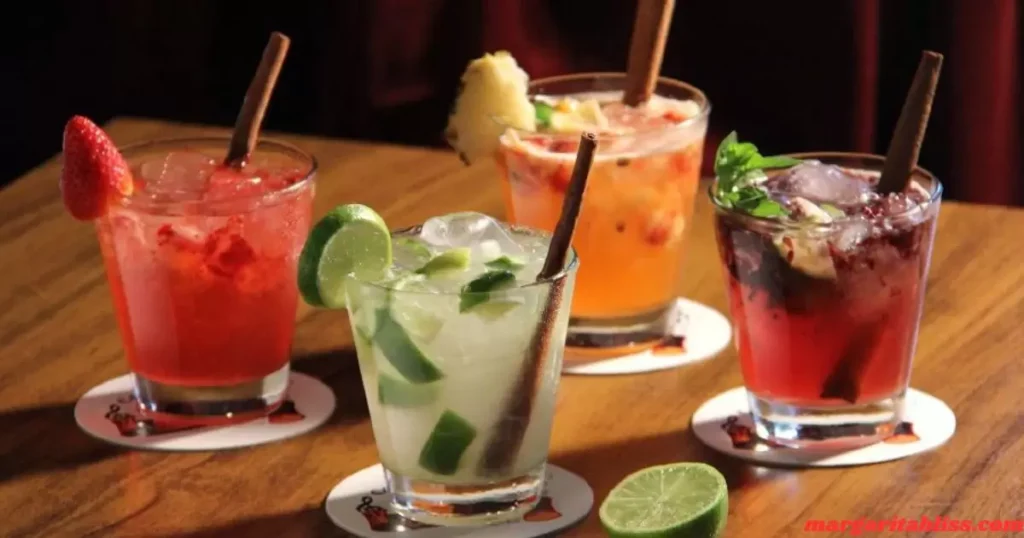
When comparing the sugar content of a Margarita with other popular cocktails, it’s evident that sugar levels can vary widely based on the type of drink. For instance:
Pina Colada: This tropical cocktail often contains significantly more sugar than a Margarita, mainly due to the inclusion of sweetened coconut cream and pineapple juice. A typical serving can have around 20-30 grams of sugar.
Mojito: A Mojito, made with rum, lime, mint, sugar, and soda water, usually has less sugar than a Margarita. The sugar content is around 5-10 grams per serving, depending on the amount of added sugar or simple syrup.
Old Fashioned: This whiskey-based cocktail typically has less sugar, with only a teaspoon or two of sugar or simple syrup, totaling around 4-8 grams per drink.
Cosmopolitan: A Cosmo, which includes vodka, cranberry juice, triple sec, and lime juice, often has a similar sugar content to a Margarita, ranging from 10-15 grams, depending on the sweetness of the cranberry juice and the amount of triple sec.
Long Island Iced Tea: Known for its high alcohol content, this cocktail also has a high sugar level due to the mix of multiple sweet liqueurs and cola. It can contain upwards of 30 grams of sugar per serving.
Factors Influencing Sugar Levels
Type of Sweetener: The choice between granulated sugar, syrup, agave nectar, or honey affects the sugar content. Each has different sweetness levels and densities.
Amount of Liqueur: Liqueurs like triple sec or Cointreau contribute additional sugar. The quantity used can significantly alter the drink’s sugar level.
Recipe Variation: Classic recipes typically have less sugar compared to modern, more elaborate versions.
Bar/Brand Preference: Different bars and premixed brands have their own recipes, which can vary widely in sugar content.
Personal Taste: Individual adjustments made for personal taste can increase or decrease the sugar content.
Choice of ingredients (natural vs. processed)
The choice between natural and processed ingredients greatly impacts a Margarita’s sugar content. Natural options like fresh lime juice and agave nectar contain inherent sugars, while processed ingredients, such as pre-made mixes or flavored syrups, often have added sugars, leading to higher overall sugar levels in the cocktail.
Variations in recipes (classic vs. modern takes)
Classic Margarita recipes typically feature simpler, less sugary compositions, focusing on tequila, lime, and a touch of sweetener. Contemporary approaches frequently explore extra elements such as flavored liqueurs or fruits, leading to increased and diverse sugar levels.
Impact of Sugar on Taste and Experience
Sugar in a Margarita significantly impacts its taste and drinking experience. It softens the acidity of lime and the sharpness of tequila, creating a harmonious blend. The right amount of sweetness enhances the drink’s overall flavor, making it more enjoyable and appealing to a broader range of palates.
How sugar alters the taste profile
Sugar in a Margarita can profoundly alter its taste profile. It mitigates the tartness of the lime juice and the boldness of the tequila, creating a more balanced and palatable drink. By adding sweetness, sugar rounds out the harsher alcohol notes, allowing the subtler flavors of the tequila and citrus to shine through.
This addition transforms the Margarita from a purely sour or strong drink to one with a complex, multifaceted flavor profile, enhancing the overall sensory experience and making it appealing to a wider audience.
Sugar’s effect on the overall drinking experience
Sugar’s presence in a Margarita elevates the overall drinking experience by creating a pleasing balance between sweet and sour elements. It smooths the potent kick of tequila and the sharpness of lime, yielding a more rounded and enjoyable flavor. This balance enhances the cocktail’s appeal, making it not just a drink, but a delightful sensory experience, appreciated by casual and discerning drinkers alike.
Health Considerations
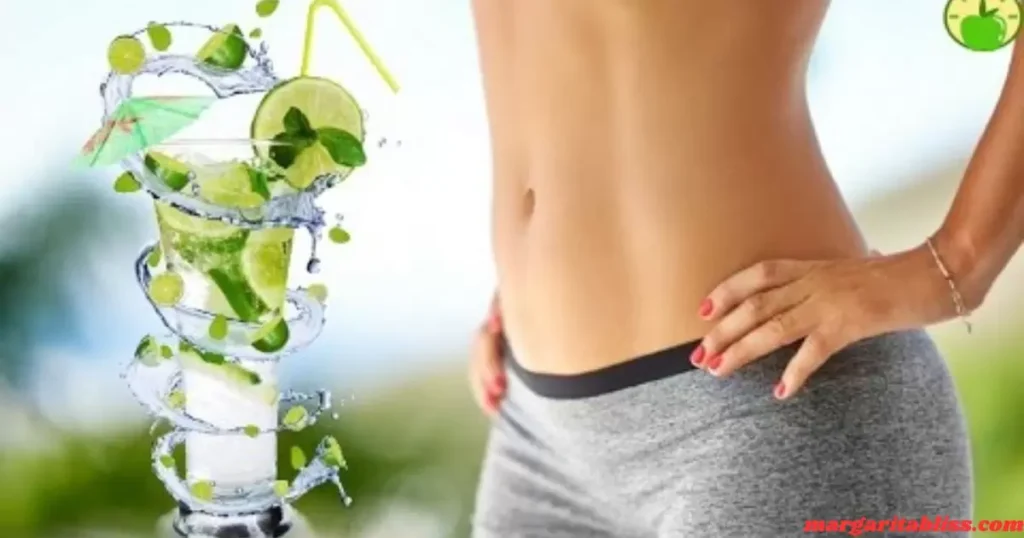
While enjoying a Margarita, it’s important to consider the health implications of its sugar content. Sugar, especially in excess, can contribute to various health issues such as weight gain, elevated blood sugar levels, and an increased risk of heart disease. For individuals monitoring their calorie intake or managing conditions like diabetes, being mindful of the sugar in cocktails is essential.
Opting for a Margarita with less sugar or using natural sweeteners like agave nectar can be a healthier choice. It’s also beneficial to be aware of the types and amounts of sweeteners used in different Margarita recipes. Moderation is key; enjoying a Margarita occasionally rather than as a regular part of one’s diet can help maintain a healthier lifestyle while still allowing for the enjoyment of this popular cocktail.
Calories from sugar in Margaritas
The calories from sugar in a Margarita can vary depending on the specific recipe and ingredients used. Typically, sugar contributes significantly to the overall caloric content of the cocktail. In a standard Margarita, which contain about 10-15 grams of sugar per serving, this translates to approximately 40-60 calories just from the sugar.
It’s important to note that this is a general estimation and can vary. For instance, Margaritas made with higher sugar content, like those using sweet liqueurs or flavored syrups, will have more calories. Conversely, Margaritas made with less sugar or natural sweeteners like agave nectar have fewer calories. This aspect is crucial for those who are calorie-conscious or trying to limit their sugar intake.
Recommendations for those monitoring sugar intake
Choose Natural Sweeteners: Opt for Margaritas made with natural sweeteners like agave nectar, which have a lower glycemic index compared to refined sugar. These sweeteners can provide a similar sweetness with potentially fewer sugar-related health impacts.
Modify the Recipe: Request a Margarita with less sugar or syrup, or ask for the sweet components to be served on the side. This control allows you to adjust the sweetness to your preference, reducing overall sugar intake.
Be Mindful of Portions: Limiting the number of Margaritas consumed is an effective way to manage sugar intake. Enjoying a single drink slowly, savoring its flavors, can be more satisfying and healthier than multiple servings.
Traditional Lime Margarita
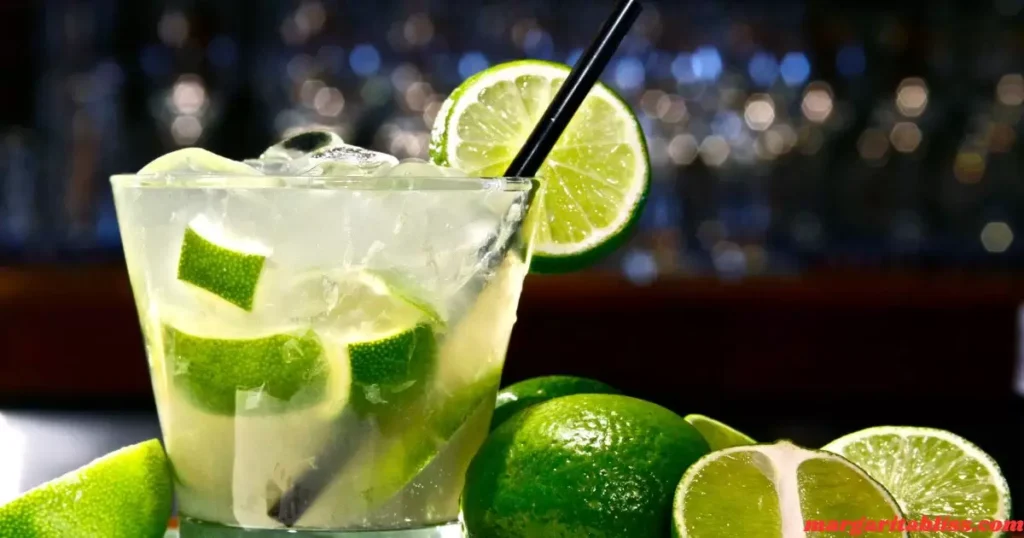
A traditional Lime Margarita typically contains a moderate amount of sugar, as its main components are tequila, lime juice, and a sweetening agent like triple sec or simple syrup. On average, a standard Lime Margarita contain about 10-15 grams of sugar per serving.
This estimate can vary based on the specific recipe and how much sweetener is added. Some recipes use less sugar for a tarter taste, while others add more for extra sweetness. It’s also worth noting that using fresh lime juice as opposed to pre-packaged mixes can often result in a lower sugar content.
Mixers
Mixers add flavor and volume to cocktails, ranging from sodas and juices to syrups and liqueurs, significantly influencing a drink’s taste, texture, and sugar content.
jose Cuervo Classic Lime Margarita
Jose Cuervo Classic Lime Margarita mix, a popular pre-made option, typically contains higher sugar levels. A single serving can have around 24 grams of sugar, reflecting its ready-to-drink convenience and emphasis on a consistently sweet flavor profile.
A Skinnygirl Margarita
Skinnygirl Margarita is designed for lower calorie and sugar content. A serving usually contains around 0.3 grams of sugar, making it a favorable choice for those watching their sugar intake, offering the Margarita experience with minimal sugar.
Fruit Mixers
Fruit mixers, like purees or juices, add natural sweetness and vibrant flavors to cocktails, enhancing taste while contributing to the drink’s overall sugar content.
Raspberry Caipirinha
A Raspberry Caipirinha, featuring fresh raspberries, lime, sugar, and cachaça, generally contains about 15-20 grams of sugar per serving. This estimate includes sugar from both the added sweetener and the natural sugars in raspberries, creating a balanced yet sweet profile.
Blueberry Collins
In a Blueberry Collins, which combines gin, lemon juice, blueberries, and syrup, the sugar content is typically around 12-18 grams per serving. This includes natural sugars from blueberries and added sweetness from the syrup, offering a refreshing and slightly sweetened cocktail experience.
Lower Sugar Options
Natural Sweeteners: Use natural sweeteners like stevia or monk fruit, which provide sweetness without the added sugars and calories.
Fresh Fruit: Incorporate fresh fruits like berries, citrus, or melon for natural sweetness and flavor without the need for added sugar.
Dilute with Soda Water: Mix cocktails with soda water or sparkling water to reduce the overall sugar content while maintaining volume and effervescence.
Less Sweet Liqueurs: Choose liqueurs with lower sugar content, or use them sparingly. Opt for dry vermouths or herbal liqueurs over sweetened ones.
Homemade Syrups: Make your own syrups with less sugar, or use alternative sweeteners. This allows for control over the sweetness level.
How Much Sugar In A Margarita On The Rocks
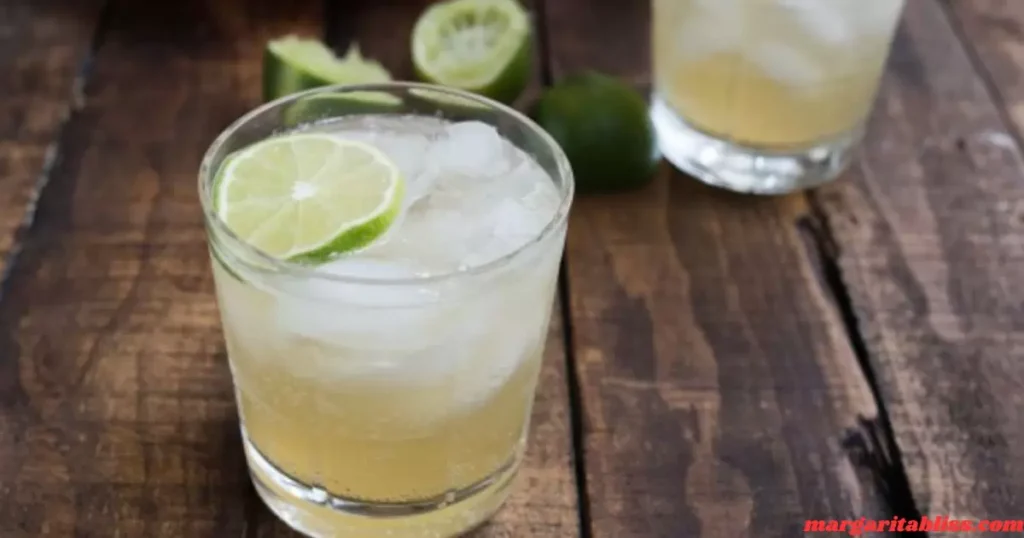
A Margarita on the rocks typically contains about 10-15 grams of sugar per serving. This amount can vary based on the specific recipe and the type and amount of sweeteners used, such as simple syrup or triple sec. Homemade versions have less sugar compared to restaurant or pre-made mixes, as they can be tailored to personal taste preferences.
Conclusion
The Margarita, a renowned cocktail, traditionally blends tequila, lime juice, and triple sec, achieving a balance of sweetness, sourness, and robust tequila flavor. Sugar, crucial in this mix, offsets lime’s tartness and softens tequila’s intensity, enhancing the drink’s palatability and creating a harmonious flavor profile.
Various sugars like granulated sugar, syrup, agave nectar, or honey can be used, each contributing unique tastes. A standard Margarita contains about 10-15 grams of sugar per serving, though this varies across recipes and versions like the Skinny Margarita or fruit-flavored variants, which have different sugar levels. Comparatively, a Margarita has more sugar than a Mojito but less than a Pina Colada.
Health-wise, excessive sugar can be a concern, prompting alternatives like natural sweeteners or reduced-sugar recipes for a healthier option. The choice of sweeteners and mixers greatly influences a Margarita’s sugar content and overall taste, highlighting the importance of balancing ingredients for an optimal drinking experience.
FAQs
Is margarita a salt or sugar?
A Margarita traditionally includes both salt and sugar. The rim of the glass is often salted, while sugar is used within the drink to balance the tartness of the lime and the strength of the tequila.
Why do you put sugar in a margarita?
Sugar is added to a Margarita to balance the sourness of the lime juice and the bitterness of the tequila. It enhances the overall flavor, making the cocktail more palatable and enjoyable.
Is there a lot of sugar in margaritas?
The sugar content in Margaritas can vary. On average, a standard Margarita contains about 10-15 grams of sugar per serving. However, this can be higher in sweeter or pre-mixed versions.
How unhealthy is a margarita?
The health impact of a Margarita depends on its ingredients and the amount consumed. Margaritas, especially those with high sugar content or consumed in large quantities, can contribute to calorie intake and sugar-related health issues. Moderation is key for a healthier experience.
Which has more sugar, beer or margarita?
Typically, a Margarita has more sugar than beer. Most beers have minimal sugar content, whereas Margaritas, due to their ingredients like triple sec and sweeteners, generally have higher sugar levels. The exact difference depends on the specific types of beer and Margarita.
